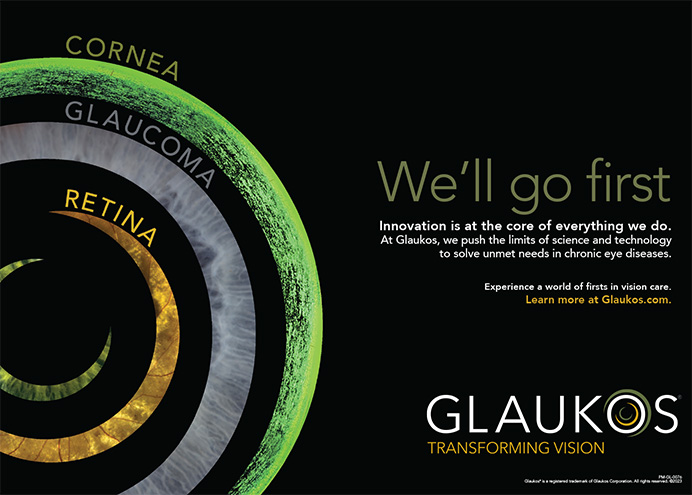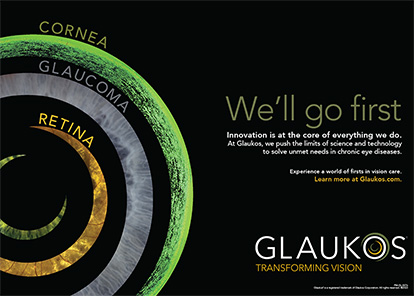
It is an exciting yet challenging time in ophthalmology. On the one hand, the pace of innovation in the field has been accelerating, with the FDA’s approving numerous new medications over the past 12 months. Among these are two formulations of riboflavin (for use during corneal collagen cross-linking) and Bromsite (bromfenac ophthalmic solution 0.075%; Sun Pharma), an anti-inflammatory drug used during eye surgery. The agency also approved Xiidra (lifitegrast ophthalmic solution 5%; Shire), the second medication available to US doctors and patients for the treatment of dry eye disease. Allergan, meanwhile, recently announced FDA approval of a multidose version of Restasis (cyclosporine ophthalmic emulsion 0.05%).
The challenge for clinicians has been figuring out how to help patients acquire the best medications for their condition at a price that they can afford. A major obstacle is that, when eye care professionals prescribe a medication to a patient, they do not know what its actual out-of-pocket cost will be. At the end of an examination, physicians may face a choice between two medications that work equally well for a given condition yet possess limited information on which will be more affordable to the patient.
Pharmaceutical companies have tried to help by providing discount coupons, but federal law prohibits their use by Medicare patients. Moreover, some drugs remain extremely expensive for a patient despite the use of a coupon.
AT A GLANCE
• The challenge for clinicians is figuring out how to help patients acquire the best medications for their condition at a price that they can afford. A major obstacle is that, when eye care professionals prescribe a medication to a patient, they do not know what its actual out-of-pocket cost will be.
• These hurdles have led eye care professionals toward alternative options for patients to acquire medications at a known cost that is within their budget. The alternatives are generic equivalents and compounded formulations. Neither is without potential drawbacks.
In the end, clinicians must make an educated guess as to which medications to prescribe, and inevitably, the office staff later must deal with phone calls from some patients who are shocked by their bill at the pharmacy. Further taxing staff members is that they must complete lengthy prior authorization forms to allow patients access to various prescription medications.
These hurdles have led eye care professionals toward alternative options for patients to acquire medications at a known cost that is within their budget.
GENERIC ALTERNATIVES
The first route is for US practitioners to prescribe generic medications. In the past, these products were often significantly cheaper than their brand-name counterparts, but unfortunately, generic drug prices have skyrocketed during the past few years.
A daily struggle I have, for example, regards the choice of topical steroid. Brand-name agents such as Durezol (difluprednate ophthalmic emulsion 0.05%; Alcon) and Lotemax 0.5% Gel Drop (loteprednol etabonate ophthalmic gel 0.5%; Bausch + Lomb) offer advantages over generic prednisolone acetate; the first is more potent, and the second is less likely to cause an IOP spike. In some cases, patients using a manufacturer’s coupon can obtain brand-name steroids for less money than a generic agent. In other cases, however, prednisolone acetate costs patients significantly less than brand-name steroids.
Two factors add to the complexity. First, the price of these steroids can vary significantly from one pharmacy to another. Second, there is currently no method by which a prescribing physician can direct patients to a local pharmacy that has the best price for a given medication.
COMPOUNDING
The past few years gave rise to a second route to providing lower-priced medications: compounding pharmacies. These facilities are important to the health care landscape in the United States. Compounding pharmacies can provide custom medications that are not available commercially. They are also able to provide sterile single-use containers (vials or syringes) of medications that are manufactured in large quantities. For example, compounding pharmacies can provide single-use vials of moxifloxacin, obtained from either intravenous moxifloxacin or from a bottle of Vigamox (Alcon), that can be used during cataract surgery.
In addition, compounding pharmacies can produce combination eye drops such as a fixed combination of a steroid and nonsteroidal anti-inflammatory drug. They can also provide a triple combination such as a steroid, nonsteroidal anti-inflammatory drug, and antibiotic that can be used topically before and after eye surgery. Combination medications offer the advantage of increased convenience for patients, who may only need to instill one drop twice a day instead of remembering to administer multiple separate topical medications during the day. Because most insurance companies do not cover the cost of compounded topical medications, however, patients typically have to pay out of pocket for these products.
THE ISSUE OF SAFETY
Although generic medications and compounded medications have a very good track record and at times may be less expensive than brand-name options, safety is an important issue. Brand-name topical eye drops have the advantage of extensive human testing prior to FDA approval. Moreover, the production facilities and processes are highly regulated, so patients can feel sure that each bottle contains the identical solution.
In contrast, generic topical eye drops can receive FDA approval if the solution is shown to be very similar to its brand-name counterpart. Minimal human testing is required prior to release of a generic agent, and side effects and ocular surface toxicity can be higher.
Safety data on compounded combination medications may also be limited prior to the agents’ use by patients. Furthermore, each compounding pharmacy may have a slightly different formula for the same combination of agents, and there may be differences in the medications’ absorption as well as overall efficacy based on the final pH or other factors. Another important safety concern is dilution errors or contamination. Although the risk may be low for topical compounded medications, it is exponentially higher when compounded medications are used intraocularly. Patients have lost a significant amount of vision or have been blinded because of errors from compounded medications administered inside the eye such as dilution errors or microbial contamination. For example, in 2011, bevacizumab prepared by a compounding pharmacy in Florida was contaminated by bacteria, and a series of patients who received an intravitreal injection of the medication went blind from streptococcal endophthalmitis.1
When choosing among pharmaceutical agents, practitioners must weigh drawbacks and risks against potential benefits for patients.
CONCLUSION
Eye care providers have more pharmaceutical options for their patients than ever before. Challenges such as a lack of price transparency and preauthorization forms, however, have a significant impact on clinicians’ daily choices. These obstacles dramatically increase the time and energy required to prescribe effective and appropriate medications to treat patients. Although compounded medications offer an alternative to brand-name pharmaceuticals and may permit a reduced postoperative dosing schedule, their use is not free from concern. Future advances in drug delivery—from intracanalicular steroids to extended-release medications placed in the anterior chamber—may further alter the way that patients are treated.
I am hopeful that eye care professionals will get immediate access to drug prices for each patient so that they can effectively prescribe the best medications with a minimum of hassle for both the patient and the office staff.
1. Goldberg RA, Flynn HW Jr, Isom RF, et al. An outbreak of Streptococcus endophthalmitis after intravitreal injection of bevacizumab. Am J Ophthalmol. 2012;153(2):204-208.e1.




